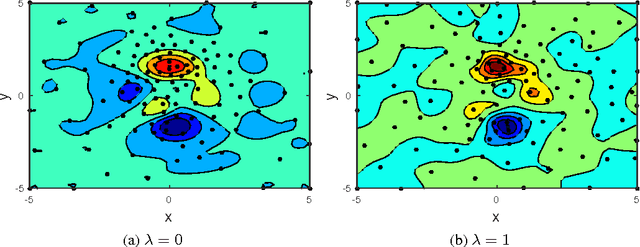Dirk Deschrijver
Sensor Fusion using Backward Shortcut Connections for Sleep Apnea Detection in Multi-Modal Data
Dec 14, 2019



Abstract:Sleep apnea is a common respiratory disorder characterized by breathing pauses during the night. Consequences of untreated sleep apnea can be severe. Still, many people remain undiagnosed due to shortages of hospital beds and trained sleep technicians. To assist in the diagnosis process, automated detection methods are being developed. Recent works have demonstrated that deep learning models can extract useful information from raw respiratory data and that such models can be used as a robust sleep apnea detector. However, trained sleep technicians take into account multiple sensor signals when annotating sleep recordings instead of relying on a single respiratory estimate. To improve the predictive performance and reliability of the models, early and late sensor fusion methods are explored in this work. In addition, a novel late sensor fusion method is proposed which uses backward shortcut connections to improve the learning of the first stages of the models. The performance of these fusion methods is analyzed using CNN as well as LSTM deep learning base-models. The results demonstrate a significant and consistent improvement in predictive performance over the single sensor methods and over the other explored sensor fusion methods, by using the proposed sensor fusion method with backward shortcut connections.
Generating an Explainable ECG Beat Space With Variational Auto-Encoders
Nov 12, 2019



Abstract:Electrocardiogram signals are omnipresent in medicine. A vital aspect in the analysis of this data is the identification and classification of heart beat types which is often done through automated algorithms. Advancements in neural networks and deep learning have led to a high classification accuracy. However, the final adoption of these models into clinical practice is limited due to the black-box nature of the methods. In this work, we explore the use of variational auto-encoders based on linear dense networks to learn human interpretable beat embeddings in time-series data. We demonstrate that using this method, an interpretable and explainable ECG beat space can be generated, set up by characteristic base beats.
Active Learning for Approximation of Expensive Functions with Normal Distributed Output Uncertainty
Aug 18, 2016
Abstract:When approximating a black-box function, sampling with active learning focussing on regions with non-linear responses tends to improve accuracy. We present the FLOLA-Voronoi method introduced previously for deterministic responses, and theoretically derive the impact of output uncertainty. The algorithm automatically puts more emphasis on exploration to provide more information to the models.
Fast Calculation of the Knowledge Gradient for Optimization of Deterministic Engineering Simulations
Aug 16, 2016



Abstract:A novel efficient method for computing the Knowledge-Gradient policy for Continuous Parameters (KGCP) for deterministic optimization is derived. The differences with Expected Improvement (EI), a popular choice for Bayesian optimization of deterministic engineering simulations, are explored. Both policies and the Upper Confidence Bound (UCB) policy are compared on a number of benchmark functions including a problem from structural dynamics. It is empirically shown that KGCP has similar performance as the EI policy for many problems, but has better convergence properties for complex (multi-modal) optimization problems as it emphasizes more on exploration when the model is confident about the shape of optimal regions. In addition, the relationship between Maximum Likelihood Estimation (MLE) and slice sampling for estimation of the hyperparameters of the underlying models, and the complexity of the problem at hand, is studied.
 Add to Chrome
Add to Chrome Add to Firefox
Add to Firefox Add to Edge
Add to Edge